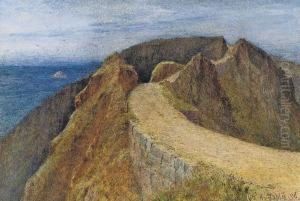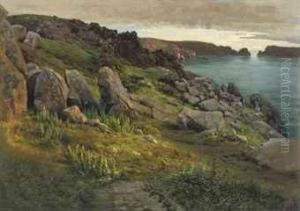William Arthur Toplis Paintings
William Arthur Toplis was a British painter known primarily for his landscape and genre scenes. Born in 1857 in Matlock, Derbyshire, England, Toplis was active during the late 19th and early 20th centuries, a period that saw a great deal of change and development in the art world.
Toplis's early life and training are not extensively documented, but it is known that he developed an affinity for painting from a young age. His work often reflected the beauty of the English countryside, and he was particularly adept at capturing the atmospheric effects of light and weather in his landscapes. His genre scenes, on the other hand, depicted everyday life with a sense of realism and attention to detail that was characteristic of the period.
Throughout his career, Toplis exhibited his work at various institutions, including the Royal Academy of Arts in London. His paintings were well-received, and he gained a reputation as a skilled landscape painter. Despite this, Toplis did not achieve the same level of fame or recognition as some of his contemporaries. Nevertheless, his contributions to British landscape painting have been appreciated by collectors and art historians alike.
Toplis's style was influenced by the prevailing art movements of his time, including Impressionism and Realism, although he did not strictly adhere to any one school of thought. Instead, he developed his own approach, which allowed him to capture the essence of the English landscape in a way that was both personal and evocative.
William Arthur Toplis continued to paint throughout his life, remaining active until his later years. He passed away in 1942, leaving behind a body of work that continues to be studied and admired for its quiet beauty and technical proficiency. Today, Toplis's paintings can be found in various art collections and are occasionally displayed in exhibitions focused on British art of the 19th and early 20th centuries.

